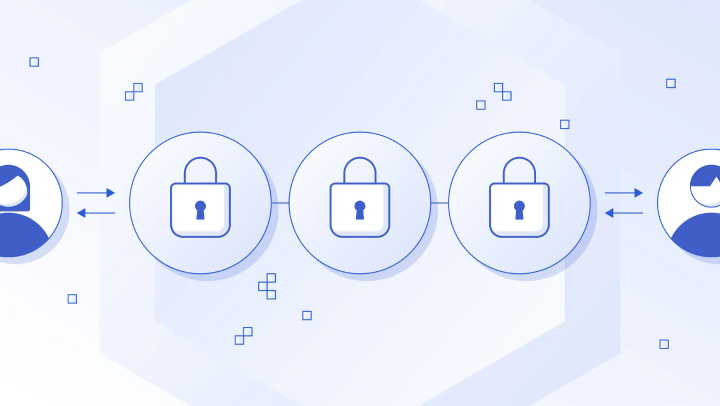What Are Cross-Chain NFTs?
A cross-chain NFT is an NFT that can exist on any blockchain, abstracting away the need for users to understand which blockchain they’re using.
In March 2023, the popular NFT project Y00ts launched its transition from Solana to Polygon. Users were asked to bridge their Y00ts NFTs—a move that garnered the attention of the NFT ecosystem.
Typically, NFT movements from one chain to another are eye-catching events, but this simple fact brings up a larger question of the reliability and security of Web3’s middleware infrastructure. In a seamless cross-chain world, moving digital assets from one chain to another should be as normal as submitting a transaction on the same blockchain.
This is not the fault of any NFT application or project. In the current paradigm of isolated blockchains and separate multi-chain implementations, cross-chain has generally been sidelined because of the excess risk introduced by cross-chain middleware. NFT projects need better infrastructure and better tools to fully realize Web3 innovation without feeling like problems could arise at any moment. This blog outlines how a secure cross-chain NFT design unleashes innovation—with the help of Chainlink CCIP.
<div class="educational-divider sections-divider"></div>
Limitations With Current NFTs
At a high level, an NFT, or “non-fungible token,” is a digital token on a blockchain with a unique identifier different from any other token on the chain. The catch: An NFT is always implemented by a smart contract, and a smart contract always exists on a single blockchain.

Thus, NFTs as they exist today are always intrinsically linked to a single and specific blockchain. They cannot be used across chains, and users on another blockchain cannot interact with those NFTs unless they switch to a different blockchain. This is why there’s a clear focus on which blockchain a popular NFT collection lives on.
<div class="educational-divider sections-divider"></div>
What Are Cross-Chain NFTs?
When an NFT moves from one blockchain to another, it becomes a cross-chain NFT. A great example of this is the Y00ts NFT collection mentioned above: It was originally deployed on Solana, and then the collection was moved to Polygon.
However, it’s not as simple as it sounds. Once distributed, NFTs are owned by individual users rather than the project or company that implemented the NFT smart contract. It is technically infeasible for a project to unilaterally transition all its issued NFTs—every user must individually decide to bridge their NFT from one chain to another. For example, by March 30, 2023, 77% of Y00ts NFTs had been bridged to Polygon, meaning 23% had yet to be bridged and were still on Solana.
This is what a cross-chain NFT looks like—equivalent NFTs that exist across multiple blockchains.
<div class="educational-divider sections-divider"></div>
How Do Cross-Chain NFTs Work?
The simplest way to understand how cross-chain NFTs work is to understand smart contracts.
As mentioned above, an NFT is implemented by a smart contract that is intrinsically connected to a single blockchain. The smart contract is arguably the most important part of this equation because it controls the NFT implementation: How many are minted, when, what conditions need to be met to distribute them, and more. This means that any cross-chain NFT implementation requires at least two smart contracts on two blockchains and interconnection between them.
With this in mind, cross-chain NFTs can be implemented in three ways:
- Burn-and-mint: An NFT owner puts their NFT into a smart contract on the source chain and burns it, in effect removing it from that blockchain. Once this is done, an equivalent NFT is created on the destination blockchain from its corresponding smart contract. This process can occur in both directions.
- Lock-and-mint: An NFT owner locks their NFT into a smart contract on the source chain, and an equivalent NFT is created on the destination blockchain. When the owner wants to move their NFT back, they burn the NFT and it unlocks the NFT on the original blockchain.
- Lock and unlock: The same NFT collection is minted on multiple blockchains. An NFT owner can lock their NFT on a source blockchain to unlock the equivalent NFT on a destination blockchain. This means only a single NFT can actively be used at any point in time, even if there are multiple instances of that NFT across blockchains.

In each scenario, a cross-chain messaging protocol in the middle is necessary to send data instructions from one blockchain to another. This is because blockchains can’t natively communicate with each other or the external world. There’s no way to communicate that an NFT has been burnt so that the same NFT is minted on another chain, for example. But cross-chain messaging protocols and bridges are also where the trepidation around cross-chain NFTs comes from.
<div class="educational-divider sections-divider"></div>
How Chainlink Solves the Cross-Chain Problem
Historically, cross-chain bridges and messaging protocols have suffered from poor security, resulting in $2.6B+ in total value being exploited from bridges in 2022 alone. But the demand for cross-chain—and the potential of what can be built with access to a secure cross-chain messaging protocol—has remained steady, evidenced by $7B+ in monthly bridge volume.

While most of these exploits targeted the fungible tokens backing wrapped tokens and not NFTs, there is little meaningful difference in their security considerations—an NFT bridge in function is very similar to a fungible token bridge. This is because both bridge implementations involve, at their core, passing data messages that control the token movement between blockchains.
This is where the Chainlink Cross-Chain Interoperability Protocol (CCIP) steps in, with security and reliability as its defining feature. Specifically, CCIP leverages the same high-quality Chainlink node operators and consensus technologies that have securely enabled more than $8 trillion in value for DeFi protocols.

With an existing platform of proven Web3 services for dApps to access price data, verifiable randomness, smart contract automation, and more, Chainlink has already helped power over 1,800 projects in the Web3 ecosystem to date. And now, CCIP marks the transformation of a risk-ridden vertical into one that’s underpinned by Chainlink’s hyper-reliable oracle networks.
<div class="educational-divider sections-divider"></div>
Cross-Chain NFT Use Cases With CCIP
CCIP gives developers access to a secure cross-chain messaging solution needed to confidently build cross-chain NFTs and related applications.
This unlocks a new world of use cases for NFTs that transcend any individual blockchain and pioneer better UX for all Web3 users. Below are some examples.
Universal NFTs
By using CCIP’s Arbitrary Messaging capabilities to help secure cross-chain NFT implementations, NFT projects can offer their users access to their NFTs across blockchains. This is the first use case for cross-chain NFTs—the ability to abstract away the underlying blockchain and make any NFT natively available to users on their chosen blockchain.

Cross-Chain NFTFi
Through CCIP Arbitrary Messaging, NFT ownership data can be made natively available across blockchains, making it easier for external developers and teams to build on top of NFT collections. For example, an NFTFi lending platform can now enable users to post collateral on one chain and borrow an alternative digital asset that exists on another chain. In the long term, this could even be possible with tokenized real estate NFTs being posted as collateral for loans across chains.

Cross-Chain Games
Given the low entry to barriers of Web2 competitors and the limited attention span inherent to online entertainment, UX barriers are particularly important to solve for the Web3 gaming ecosystem. With cross-chain NFTs, players can log in using their wallets on any chain and trigger in-game actions that exist on another chain—a prime example of a cross-chain messaging use case.
<div class="educational-divider sections-divider"></div>
Conclusion
Security has been a key blocker holding cross-chain innovation in the NFT space back. Chainlink CCIP provides NFT developers and projects with a security-first cross-chain messaging solution, one that uses the same time-tested infrastructure that has already helped secure DeFi for multiple years.
In the NFT ecosystem, gaming included, solving UX barriers is critically important. Eventually, no user should have to know which blockchain they’re using if they don’t want to. And if they do, the rails to getting from one blockchain to another should be as simple and as seamless as sending a transaction on one blockchain. This vision of a cross-chain world is being realized by Chainlink CCIP, and it’s poised to transform the individual NFT ecosystems that exist on single blockchains into an expansive multi-chain ecosystem of interconnected, cross-communicating NFTs.














